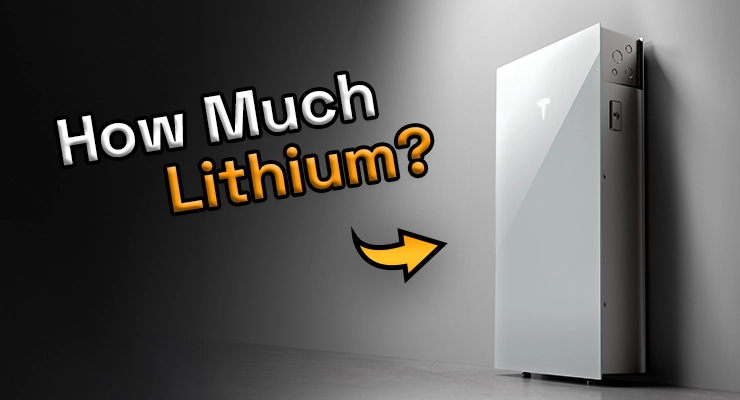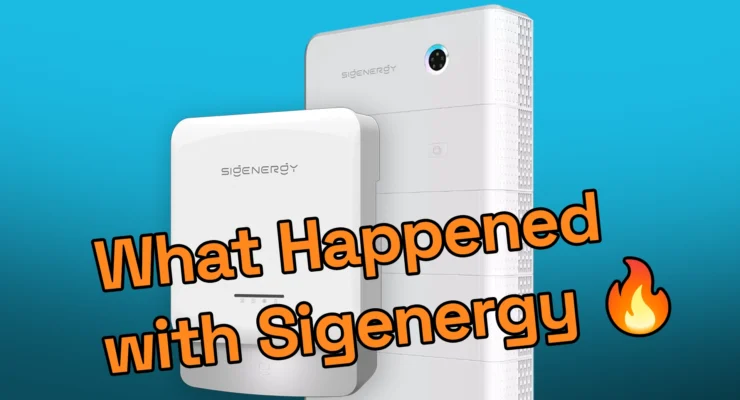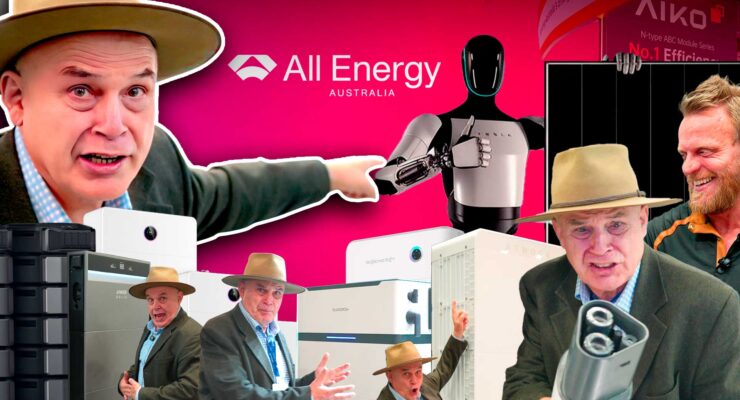Fast read
A Tesla Powerwall 2 contains a surprisingly small amount of lithium, estimated to be around 6 kilograms of lithium content within its 114 kg total weight. The battery uses a Nickel-Manganese-Cobalt (NMC) chemistry, where lithium is a critical but not the heaviest component. Understanding this helps place the environmental impact of raw material sourcing and the importance of recycling in a clearer context for Australian homeowners.
Tesla Powerwall: How Much Lithium Is Really Inside?
As Australian homeowners increasingly look to battery storage to complement their solar systems, questions about what’s inside these powerful devices are becoming more common. A frequent query we hear at Your Energy Answers centres on one of the most well-known batteries on the market: “How much lithium is actually in a Tesla Powerwall?”
The answer is both surprising and revealing. It highlights that while lithium is the key ingredient that gives the battery its name, it makes up only a small fraction of the unit’s total weight.
Breaking down the Powerwall’s weight
A Tesla Powerwall 2 unit, which has a total energy capacity of 13.5 kilowatt-hours (kWh), weighs 114 kilograms. However, the vast majority of this weight is not lithium. The weight comes from numerous components, including:
- The battery cells themselves: These contain other important metals like nickel, manganese, and cobalt, as well as graphite for the anode.
- The battery casing: A robust, weatherproof enclosure to protect the components, suitable for both indoor and outdoor installation.
- Integrated inverter: The Powerwall 2 is an AC-coupled battery, meaning it has its own inverter to convert DC electricity from the battery to AC for your home.
- Liquid cooling system: Tesla is unique in using a liquid thermal management system, which contains about 2.3 litres of a water-glycol coolant to maintain the battery’s optimal operating temperature.
While Tesla doesn’t publish the exact figure, industry analysis of batteries with similar chemistry provides a reliable estimate. For a typical NMC battery, lithium makes up only about 3.2% of the mineral weight inside the cells. Based on a 13.5 kWh capacity, this means a Powerwall 2 contains approximately 6 kilograms of lithium.
Understanding the battery chemistry: Why it’s more than just lithium
The term “lithium-ion” refers to a family of battery types. The Powerwall 2 uses a specific chemistry known as Lithium Nickel-Manganese-Cobalt Oxide (NMC). In this formula, lithium ions travel between a graphite anode and an NMC cathode, creating the flow of electricity.
The combination of nickel, manganese, and cobalt is crucial:
- Nickel provides high energy density, meaning more energy can be stored in a smaller space.
- Manganese and Cobalt offer stability and safety, helping to prolong the battery’s lifespan.
It’s worth noting that the newer Tesla Powerwall 3 is expected to use a different chemistry, Lithium Iron Phosphate (LFP). LFP batteries are cobalt-free and are known for their long cycle life and excellent thermal stability, though they are slightly less energy-dense than NMC cells.
The bigger picture: Lithium sourcing and environmental responsibility
Understanding the relatively small amount of lithium in a battery is important when considering the environmental impact. Australia is the world’s largest producer of lithium, primarily from hard-rock spodumene mines in Western Australia.
Lithium extraction, like any mining, has environmental consequences. Hard-rock mining in Australia involves significant land clearing and is energy-intensive, often relying on fossil fuels for operations and transport to processing facilities, most of which are overseas. This gives Australian lithium a higher carbon footprint compared to lithium extracted from brine pools in South America, though brine extraction carries its own major challenges, particularly concerning water use in arid regions.
The presence of other materials like cobalt, which has been associated with problematic mining conditions in other parts of the world, is also a key consideration for consumers. This is why the industry is moving towards chemistries that reduce or eliminate cobalt, like high-nickel NMC 811 (80% nickel, 10% manganese, 10% cobalt) and the cobalt-free LFP chemistry.
The critical role of recycling in Australia
With battery uptake growing, establishing a robust local recycling industry is essential. Currently, only about 10% of Australia’s lithium-ion battery waste is recycled, with most of it being shipped overseas for processing.
However, this is changing. Initiatives like the national B-cycle scheme are expanding collection points, including at major retailers like Aldi, Coles, and Bunnings. Furthermore, new onshore processing facilities are being established. For instance, Calibre Metals is set to open a dedicated lithium-ion battery recycling facility in Wagga Wagga, NSW, in 2025. These facilities can recover up to 95% of the materials—including lithium, cobalt, nickel, copper, and aluminium—to be reused in manufacturing new batteries, creating a circular economy.
Your key takeaways
When you consider installing a home battery like a Tesla Powerwall, it’s helpful to look beyond the headline specifications. While the system weighs over 100 kg, the actual amount of lithium is only around 6 kg. The rest comprises other essential metals, electronics, and protective hardware.
Being aware of the battery’s full material composition provides a more complete picture, empowering you to ask informed questions about sourcing, sustainability, and end-of-life management. As Australia’s renewable energy journey continues, supporting a strong domestic recycling industry will be a crucial step in ensuring our clean energy future is also a sustainable one.




